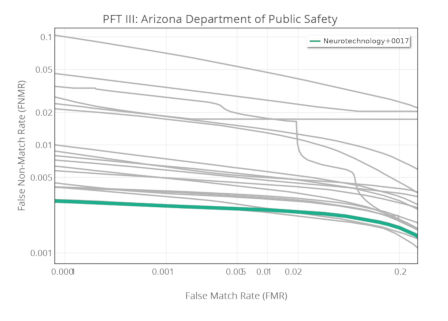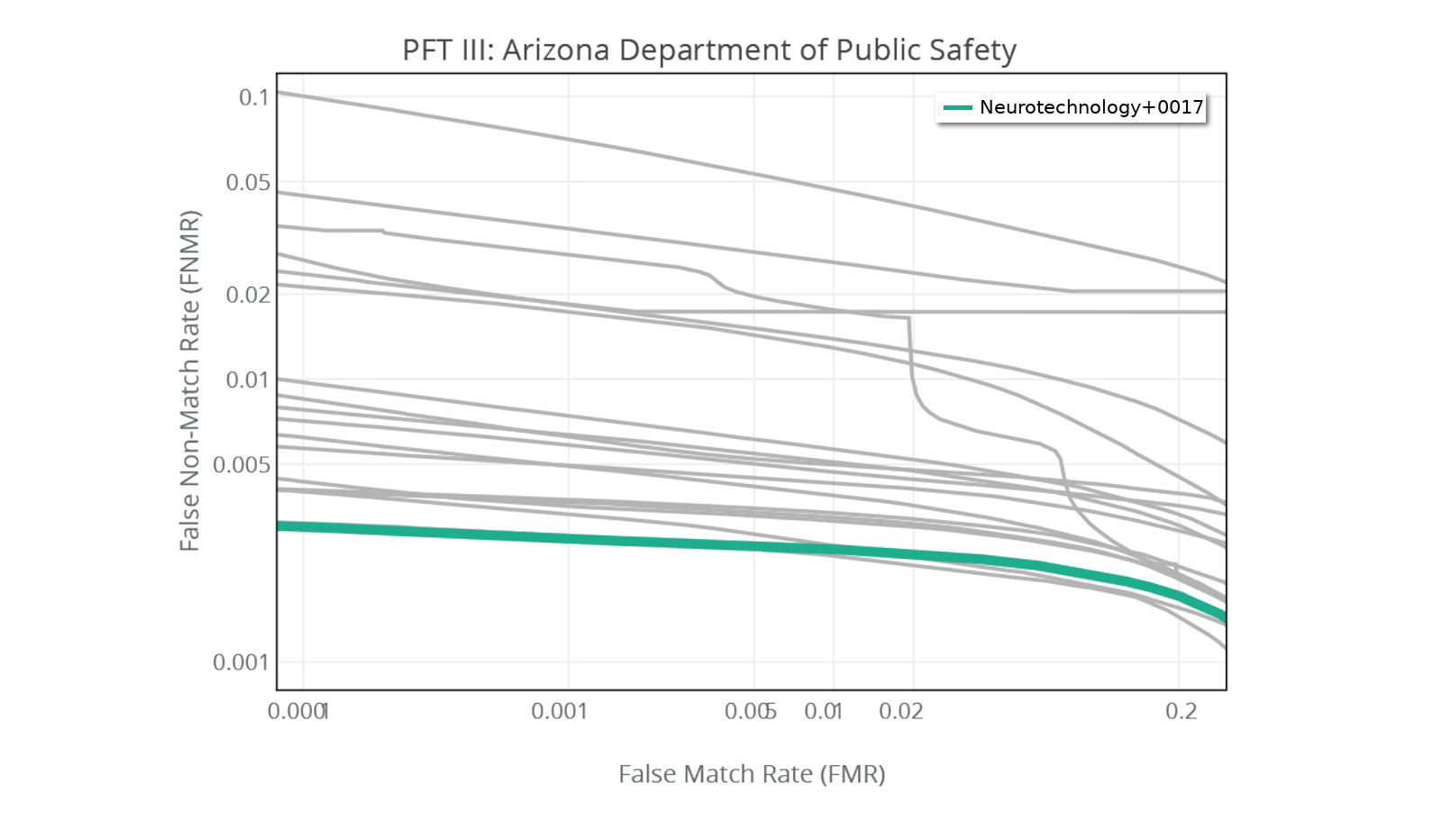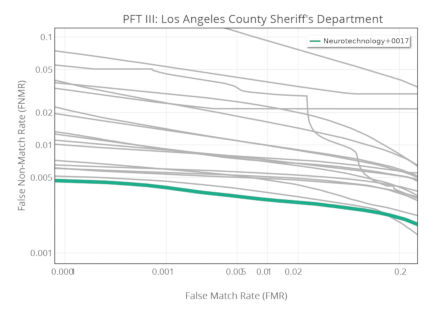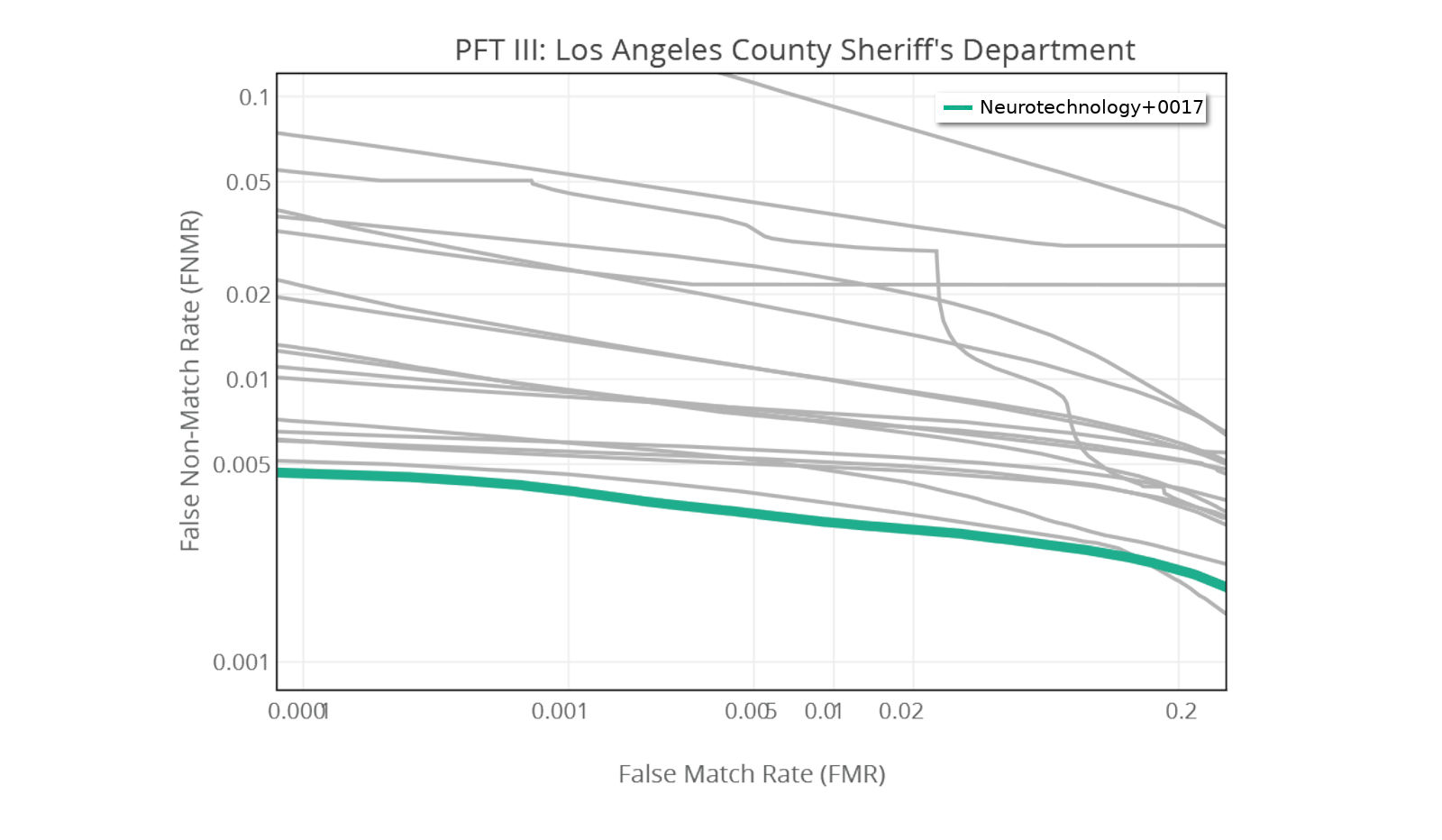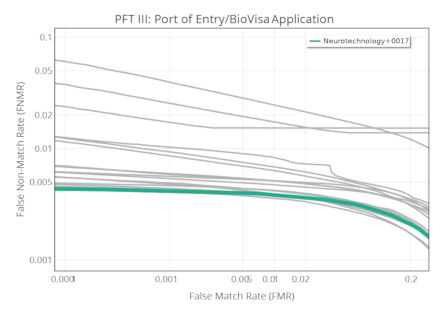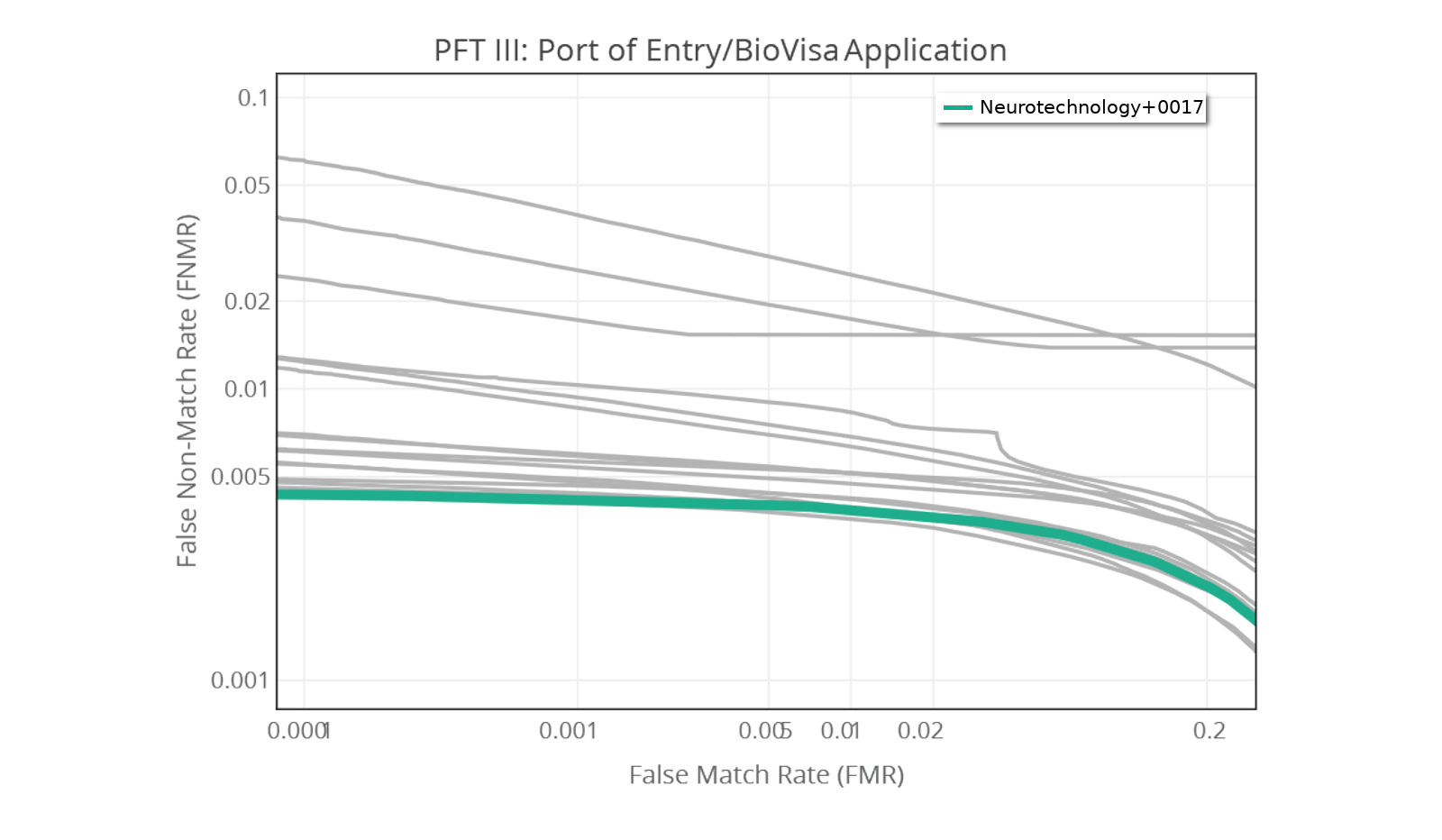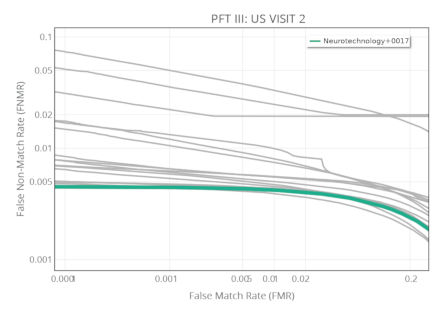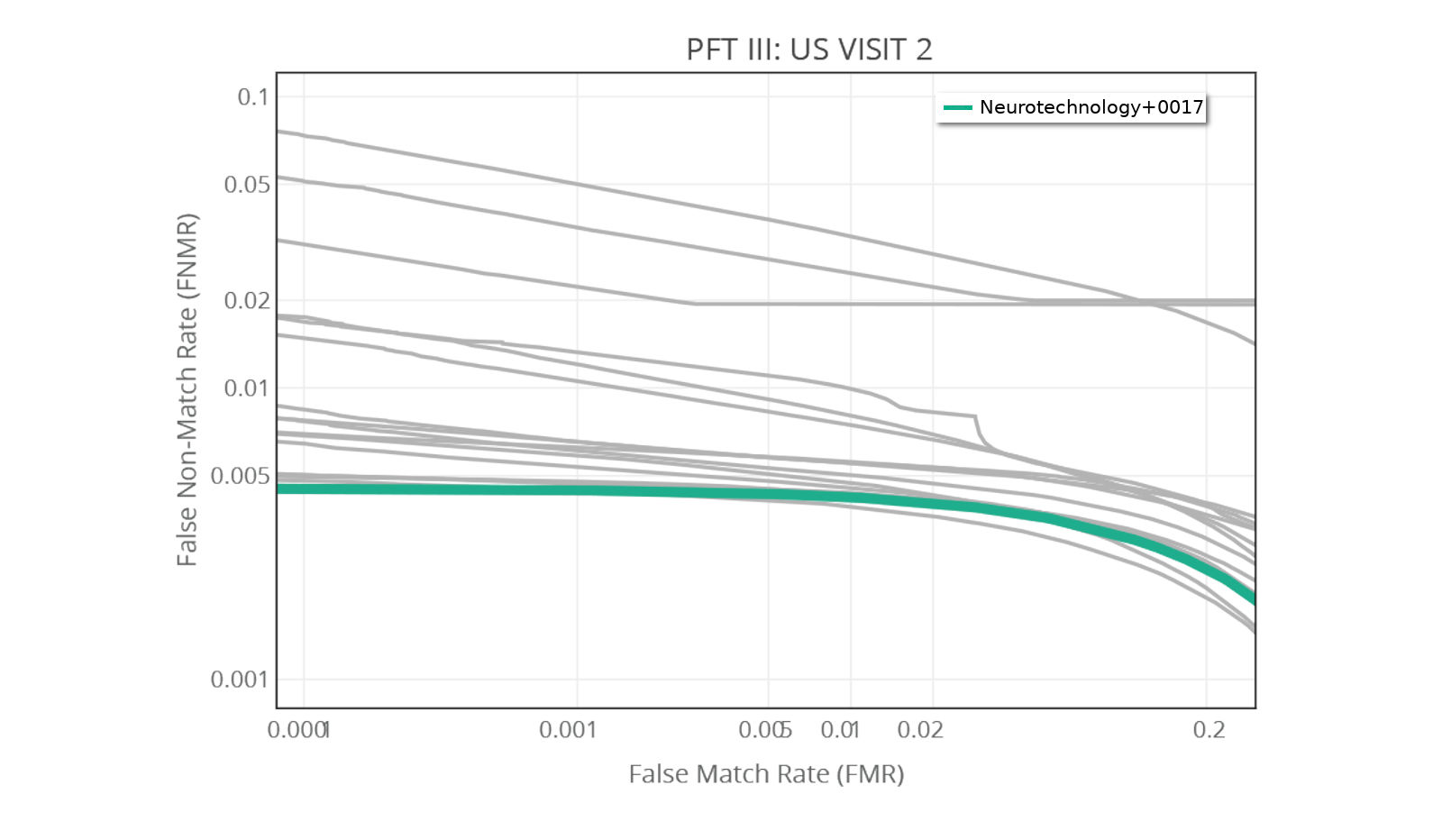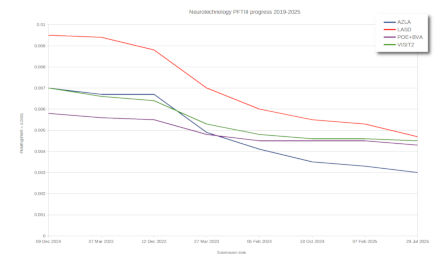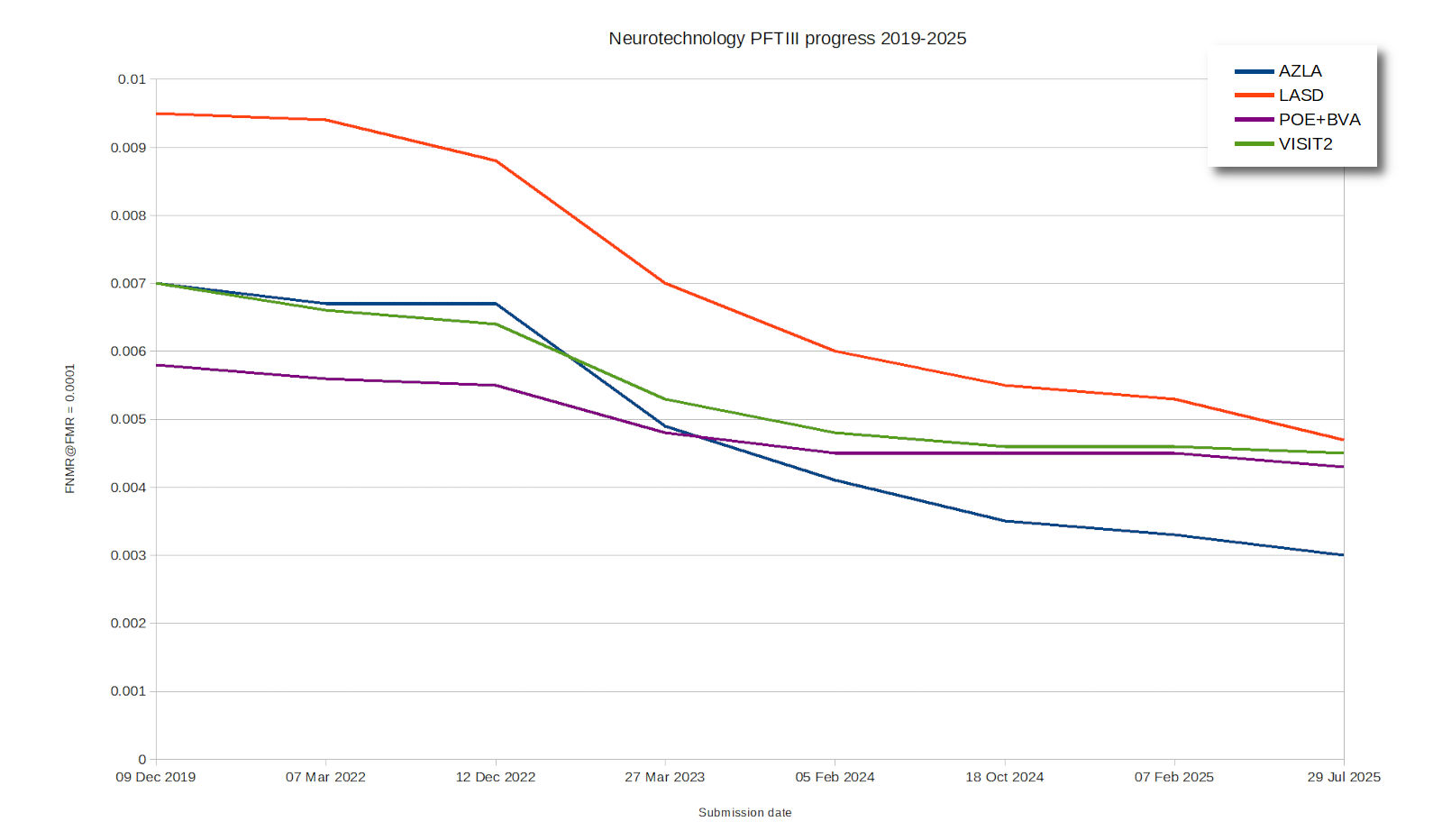PFT III Evaluation
These comments provided by Neurotechnology are based on NIST PFT III results, reviewed on July 30, 2025.
Neurotechnology has constantly participated in the NIST PFT evaluations. Different versions of the fingerprint recognition algorithms were submitted and showed top results there. The latest submission to the ongoing PFT III is on average the most accurate algorithm in most of the tests.
What is PFT III?
The Proprietary Fingerprint Template (PFT) is a series of fingerprint matching technology evaluations, which are run by NIST to assess one-to-one matching performance and accuracy with proprietary templates while using unified datasets and rulesets.
The most recent PFT III is designed in a way that the testing is performed by each participant with NIST-provided biometric data, using NIST-provided testing environment and protocol.
The results are then submitted to NIST for further evaluation.
See PFT III official page for more information.
Recent Results
We present the accuracy results as Detection Error Tradeoff (DET) charts for these datasets used in PFT III tests:
-
Law enforcement datasets:
- Arizona Department of Public Safety (AZDPS) – plain and rolled impressions of all ten fingers.
- Los Angeles County Sheriff's Department (LASD) – plain and rolled impressions of all ten fingers, captured with a mixture of ink and optical devices.
-
Border control datasets:
- Port of Entry/BioVisa Application (POE+BVA) – plain impressions of index fingers.
- US VISIT #2 (VISIT2) – plain impressions of index fingers, which are similar to POE+BVA.
Our latest submission Neurotechnology+0017 (● colored line) is the most accurate algorithm in most of the tests at the PFT III.
The presented charts are based on NIST PFT III results from July 29, 2025.
Accuracy Performance Progression
The chart illustrates how our algorithm submissions consistently improved results across all datasets since 2019. The accuracies of all submissions are shown as False Non-Match Rate at the fixed 0.0001 False Match Rate.
Submission names and dates are listed below:
- Neurotechnology+0001 – December 9, 2019
- Neurotechnology+0003 – March 7, 2022
- Neurotechnology+0005 – December 12, 2022
- Neurotechnology+0006 – March 27, 2023
- Neurotechnology+0011 – February 5, 2024
- Neurotechnology+0012 – October 18, 2024
- Neurotechnology+0013 – February 7, 2025
- Neurotechnology+0017 – July 29, 2025 (the most recent)
Neurotechnology had also participated in the previous PFT II, which ended in 2019.

